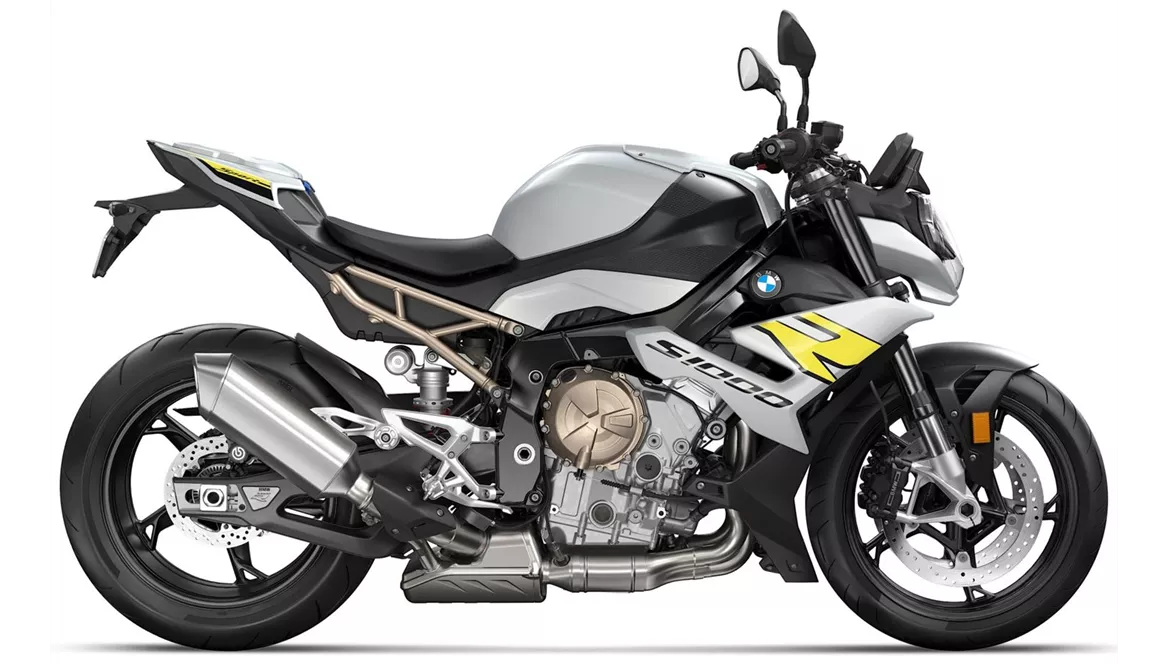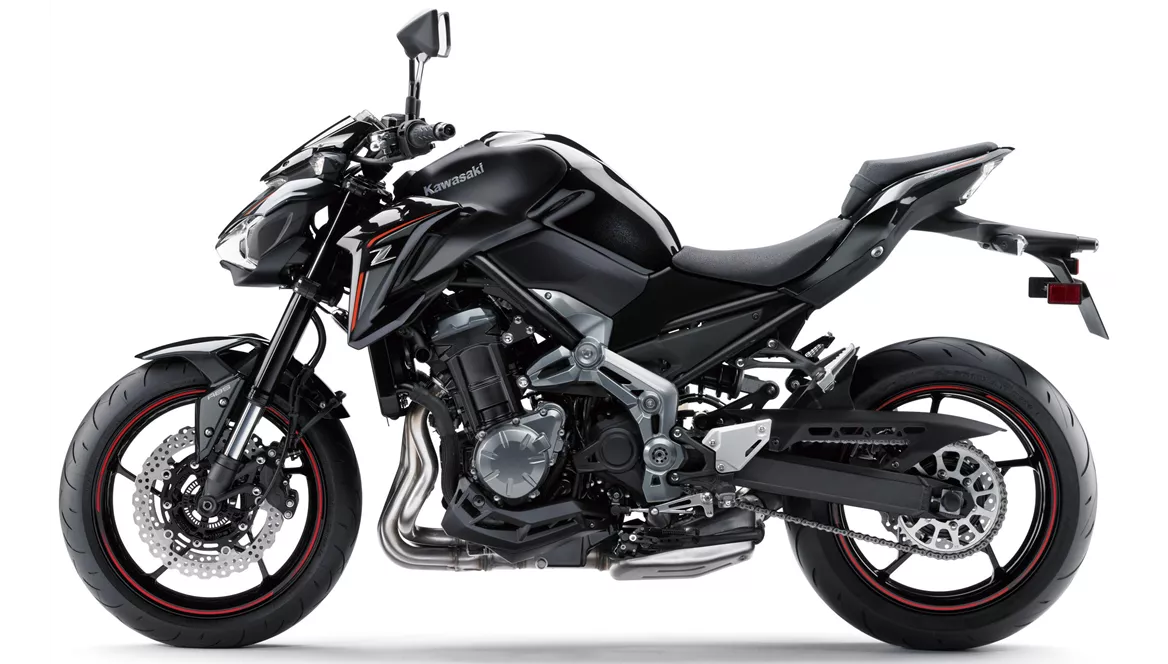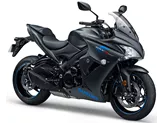BMW S 1000 R 2021 vs. Kawasaki Z900 70kW 2018

BMW S 1000 R 2021

Kawasaki Z900 70kW 2018
Vue d’ensemble - BMW S 1000 R 2021 vs Kawasaki Z900 70kW 2018
The BMW S 1000 R 2021 and the Kawasaki Z900 70kW 2018 are both naked bikes with similar engine types, inline four-cylinder engines. However, there are several differences between the two models in terms of power, torque, suspension, chassis, brakes, assistance systems, dimensions, and weights.
In terms of engine power, the BMW S 1000 R 2021 is significantly more powerful with 165 HP compared to the Kawasaki Z900 70kW 2018, which has 95 HP. This means that the BMW S 1000 R 2021 will offer a more thrilling and exhilarating riding experience with its high power output.
In terms of torque, the BMW S 1000 R 2021 also has an advantage with 114 Nm compared to the Kawasaki Z900 70kW 2018, which has 91.2 Nm. This means that the BMW S 1000 R 2021 will have better acceleration and pulling power, especially at higher speeds.
Both bikes have fuel injection systems and liquid cooling, ensuring efficient and reliable performance. They also have four cylinders, providing smooth power delivery and a balanced ride.
In terms of suspension, both bikes feature upside-down telescopic forks at the front and swing arm suspension with monoshock absorbers at the rear. However, the BMW S 1000 R 2021 offers more adjustability with compression, preload, and rebound adjustments for both the front and rear suspension. The Kawasaki Z900 70kW 2018 only offers preload and rebound adjustments for the front and rear suspension.

BMW S 1000 R 2021
In terms of chassis, the BMW S 1000 R 2021 has an aluminum frame with a twin tube design, which offers a good balance between rigidity and weight. The Kawasaki Z900 70kW 2018, on the other hand, has a steel frame with a double cradle design, which may be slightly heavier but provides good stability.
Both bikes have double disc brakes at the front with four-piston calipers. However, the BMW S 1000 R 2021 has larger diameter discs at 320 mm compared to the 300 mm discs on the Kawasaki Z900 70kW 2018. The BMW S 1000 R 2021 also features radial brake technology, which provides better braking performance and control.
In terms of assistance systems, the BMW S 1000 R 2021 offers a wide range of advanced rider assistance systems, including ABS, hill start assist, riding modes, cornering ABS, ride by wire, traction control, and anti-wheelie. The Kawasaki Z900 70kW 2018, on the other hand, only offers ABS.
In terms of dimensions and weights, both bikes have a front tire width of 120 mm and a front tire diameter of 17 inches. The BMW S 1000 R 2021 has a slightly wider rear tire at 190 mm compared to the 180 mm rear tire on the Kawasaki Z900 70kW 2018. Both bikes have a wheelbase of 1450 mm, providing good stability and handling. However, the seat height is slightly higher on the BMW S 1000 R 2021 at 830 mm compared to the 795 mm seat height on the Kawasaki Z900 70kW 2018. The BMW S 1000 R 2021 also has a lower curb weight with ABS at 199 kg compared to the 210 kg curb weight of the Kawasaki Z900 70kW 2018.

Kawasaki Z900 70kW 2018
In terms of strengths, the BMW S 1000 R 2021 offers a powerful engine, good brakes, comfortable ergonomics, and a range of high-performance optional extras. It is also praised for its simple operation and impressive speed, making it a great all-rounder.
The Kawasaki Z900 70kW 2018, on the other hand, is praised for its smooth engine with punch at around 6000 rpm, finely controllable brakes, and smooth running engine, which is ideal for city traffic. It is also stable at motorway speeds and offers good handling.
In terms of weaknesses, the BMW S 1000 R 2021 is criticized for its quickshifter, which is good but not perfect, and its sound, which can still be a bit intrusive. Some riders also experience vibrations in the handlebars.
The Kawasaki Z900 70kW 2018 is criticized for being quite small for tall people and having a relatively high weight of 210 kg, which affects its acceleration, especially with its lower power output of 48 hp.
In conclusion, the BMW S 1000 R 2021 and the Kawasaki Z900 70kW 2018 are both impressive naked bikes with their own strengths and weaknesses. The BMW S 1000 R 2021 offers more power, better torque, more adjustable suspension, a lighter chassis, larger diameter brakes, and a wider range of advanced rider assistance systems. On the other hand, the Kawasaki Z900 70kW 2018 offers a smooth engine, finely controllable brakes, good handling, and stability at higher speeds. Ultimately, the choice between the two models will depend on the rider's preferences and priorities.
Caractéristiques techniques BMW S 1000 R 2021 par rapport à Kawasaki Z900 70kW 2018
Avantages et inconvénients en comparaison
Avantages et inconvénients en comparaison
BMW S 1000 R 2021

Il est vraiment impressionnant de voir comment BMW parvient toujours à améliorer les bonnes motos. La sportive S 1000 R, avec son pack M et ses jantes en carbone, semble d'abord un peu menaçante. Mais même en 2021, la S 1000 R sert de la haute technologie et de la puissance dans un dosage grandiose. La machine se conduit avec précision, de manière souple mais sans se cabrer. Le moteur fait feu dans les coins, mais ne dépasse pas les limites. Une moto sacrément rapide !
Kawasaki Z900 70kW 2018

La Z900 est une moto d'entrée de gamme. Un moteur très doux, de bons freins et de nombreuses possibilités de réglage du châssis et des leviers. L'accélération est peut-être trop sage pour les junkies de la vitesse, mais juste ce qu'il faut pour apprendre. L'absence de gadgets électroniques, de modes de conduite et de contrôle de traction n'est pas non plus gênante, mais fait de la Z900 une bonne moto pour apprendre les bases de la locomotion à deux roues. Une puriste de qualité, une vraie moto, même avec seulement 48 chevaux !
Comparaison des prix Prix moyen du marché BMW S 1000 R vs Kawasaki Z900 70kW
There are a few key differences between a BMW S 1000 R 2021 and a Kawasaki Z900 70kW 2018. In terms of price, the actual average price of a BMW S 1000 R 2021 is about 94% higher. Compared to Kawasaki Z900 70kW 2018 there are more BMW S 1000 R 2021 bikes available on the 1000PS.de Marketplace, specifically 15 compared to 5. It takes less time to sell a BMW S 1000 R with 67 days compared to 194 days for a Kawasaki Z900 70kW. Since model year 2014 1000PS.de editors have written 62 reviews for the BMW S 1000 R and 10 reviews for the Kawasaki Z900 70kW since model year 2018. The first review for the BMW S 1000 R was published on 11/3/2013 and now has more than 17,300 views. This compares to more than 104,300 views for the first review on Kawasaki Z900 70kW published on 11/23/2018.























